“The whole life (…) announces itself as an immense accumulation of shows. Everything that was directly experienced has turned away into a representation. The show is not a set of images, but a social relationship between people, mediated by images.” These words are the beginning of Guy Debord’s book The show society, which in 1967 interpreted the modern society of images as a mystification aimed at legitimizing existing production systems. Beyond the Marxist inspiration that animated it, the text describes the artificial process of objectification that transforms an originally partial and politicized vision of the world into a univocal perspective presented as a reference model. The reflections of the French philosopher analyzed the birth of consumerism, in reference to which the author coined the definition of “augmented survival”, and stigmatized the transformation of the worker into a consumer of illusions in a prophetic intuition of the tyranny of images that the explosion of social media has made today more than ever capillary.
The work of Yves Scherer, born in 1987 in Solothurn (CH) currently living in New York, is ideally linked to these issues, for its investigation of the celebrities’ world in relation to the imaginary and the interfaces of the network. His works of sculpture, installation and mixed-media re-elaborates in three dimensions elements taken from digital culture combined with everyday materials to explore the fragile boundary between private life, virtual space and representation. The artist combines memories of his private life, fan fictions and celebrity cultures with the aim of deconstructing the fictitious intimacy between the public figure and his admirers created by the increasingly sophisticated media artifices that filter our perception of reality. Hovering between an uncontrollable desire for appropriation and identification and the need to establish a critical distance from his affectionate characters, through his works he creates precious narratives in whose plot fascination, reflection, demystification and estrangement converge.
The exhibition The Last of the English Roses, open at GALLLERIAPIÙ until September 15th, is focused on the Kate series, composed by elegant wooden and plexiglass boxes built by the artist that contain numbered and signed copies (by Scherer) of the book Kate Moss by Mario Testino. The catalog, published by Taschen in 2011, contains a gallery of shots, created during twenty years of friendship and professional collaboration, which portray the model during the shooting breaks. Each display, applied to the wall as if it were a painting, shows the open book in order to show a double-page image that acquires three-dimensionality and material consistency thanks to the volume of the sheets behind. Conceived to be observed front-back, if overturned it exhibits the mirror cover of the book that releases a distorted reflection of the observer who approaches it triggering an intriguing game of appropriation and introjection. The action, mindful of the most classic ready-made practices, at first glance seems to stage in a shameless manner what Mario Vargas Llosa after a visit at the Tate Modern defined the monumental plot devised by galleries, museums, critics and collectors to attribute the status of artwork to objects arbitrarily designated as art. Actually Scherer goes much further: perfectly at ease in the great mass media deception that insinuates in our private the digitally retouched lives of the celebrities we have seen growing from adolescence to maturity, traps the viewer in a frame-setting that recalls the essential artificiality of virtual rooms created by a software for augmented reality.
The walls and the floor (for the occasion clad in carpet) of the gallery are in fact entirely painted with two similar shades of flesh pink designed to immerse the visitor in an environment that the artist calls “romantic-soft-alienating”. The intimacy created by this renaissance rosy tint, which recalls the color of the skin of a Western white and which is not by chance used and abused by the advertising of products for body care, exerts a seductive physical and mental attraction that cancels the psychological distance which was initially created by the material evidence of the book and its frame. In this way the impeccable aesthetics of Testino’s images, which are intimate but too glamorous to be perceived as “stolen shots”, is left free to expand into space and then penetrate as an experience in our imagination. To a synaesthetic approach also alludes the title of the exhibition that, recalling a pop song by Peter Doherty, enriches the overview with images of further references retrieving the blusterous engagement of the model with the singer.
The same contamination between public and private life and the same shift between individuality and mass media models are the main theme of New York – July 26, 2012, an artist’s book produced by GALLLERIAPIÙ which collects in a kind of glossy magazine a series of photographs of Emma Watson taken on that date by a paparazzo to document her informal walk in Manhattan, while she was visiting a shop and interacting with the salesman. This seemingly uninteresting sequence of actions, which at the time became viral on the internet and caused a surge in sales of the Chanel bag model worn by the actress, is returned by Scherer as an elite event through the limited edition of the publication and the attribution of the title. If in the Kate series the artist uses an existing object (the Book of Testino) to take possession of his muse as if it were a consumer product, in New York – July 26, 2012 he puts in place an appropriation at a distance using another display device created ad hoc (the magazine). His intervention eliminates the stylistic differences between the two types of images and highlights the mechanisms through which the mass media influence our psyche and induce us to want to imitate a fiction that exists as a self-sufficient entity regardless of the human material from which its manifestations derive.
Scherer, inserted by Forbes magazine among the 30 under 30 most influential Europeans in the art and design category, emphasizes the osmosis between social networks, mass media and daily life to give life to immersive environments where you can experience the different levels of sense that are stratified in the images. Influenced by the digital culture and the endless possibilities of hybridization offered by the network, in his conceptual actions he combines a disenchanted semiotic research with a sensual aesthetic and emotional adhesion to the subjects / objects that excite his desire for appropriation and perhaps this unresolved dichotomy is the origin of the complex fascination that his works arouse.
Info:
Yves Scherer. The Last of the English Roses
May 12 – September 15 2018
Via del Porto, 48 a/b Bologna
 Yves Scherer’s portrait
Yves Scherer’s portrait
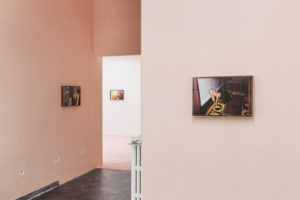 Yves Scherer, The last of the English Roses, exibition view at GALLLERIAPIÙ
Yves Scherer, The last of the English Roses, exibition view at GALLLERIAPIÙ
 Yves Scherer, The last of the English Roses, exibition view at GALLLERIAPIÙ
Yves Scherer, The last of the English Roses, exibition view at GALLLERIAPIÙ
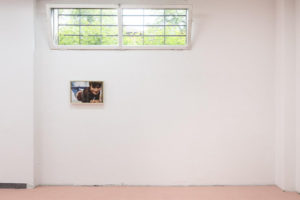 Yves Scherer, The last of the English Roses, exibition view at GALLLERIAPIÙ
Yves Scherer, The last of the English Roses, exibition view at GALLLERIAPIÙ
 Yves Scherer, The last of the English Roses, exibition view at GALLLERIAPIÙ
Yves Scherer, The last of the English Roses, exibition view at GALLLERIAPIÙ
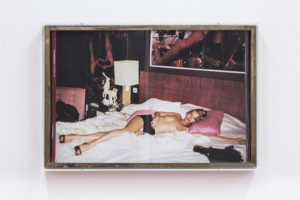 Yves Scherer, Untitled (Kate), 2018
Yves Scherer, Untitled (Kate), 2018
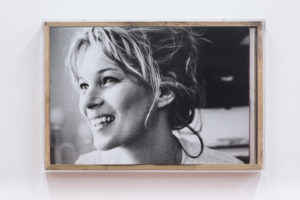 Yves Scherer, Untitled (Kate), 2018
Yves Scherer, Untitled (Kate), 2018
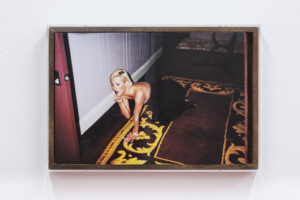 Yves Scherer, Untitled (Kate), 2018
Yves Scherer, Untitled (Kate), 2018
Graduated in art history at DAMS in Bologna, city where she continued to live and work, she specialized in Siena with Enrico Crispolti. Curious and attentive to the becoming of the contemporary, she believes in the power of art to make life more interesting and she loves to explore its latest trends through dialogue with artists, curators and gallery owners. She considers writing a form of reasoning and analysis that reconstructs the connection between the artist’s creative path and the surrounding context.






NO COMMENT